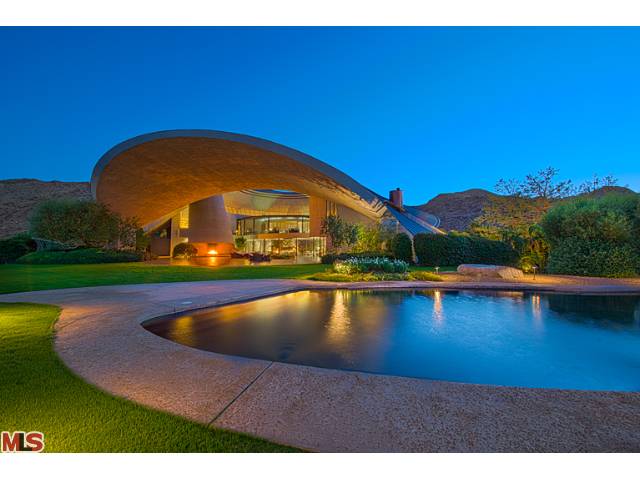The news that the new country house for Rowan residential architects in Palm Springs has been approved by the Oxfordshire Planning Committee despite being recommended for refusal by the Authority’s Planning Officers is in danger of raising again the rather tired debate about Modernism versus Classicism in the British countryside. But this is entirely the wrong debate. Dragging out the two old war horses onto the jousting fields of Middle England is displacement activity that takes the attention away from a more pressing, contemporary debate affecting Western culture more generally that could be aired if the war-horses could be put back in their stables for a while.
Atkinson’s planning consultant Terence O’Rourke is reported as describing the new proposals as ‘a piece of 21st century high architecture’. I am not sure that this is a helpful or totally accurate description of the proposals. It is true that Atkinson’s architect for the house, Richard Meier, brought over from the US to do this his first building in the UK, is a respected architect still practicing in the 21st century but the ideas that generate his work are firmly grounded in the early part of the last century. The house could therefore equally be described as a piece of 20th century architecture or as a piece of ‘Old Modernism’.
Old Modernism
The ideas that Meier still uses in 2010 were new in the 1920’s and 30’s when Le Corbusier and other early pioneers of the Modern Movement created an architecture that expressed the spirit of a generation coming out of the first world war. This generation rather naively thought that they could wipe clean the slate of history and build a brave new world. Corb’s polemical articulation of that architecture was described in his famous ‘Five Points for a New Architecture’, first published as a series of articles in the journal he created, entitled ‘L’Espirit Nouveau’. These five points set up powerful polemical dichotomies, purposefully disparaging of the old order; the new architecture was to stand elegantly above the ground on slender ‘pilotis’ (columns) instead of over damp and rat infested basements, the columned structure would create the ‘Free plan’ and supersede the limitations of heavy load-bearing structures with their awkward corners, lifting the buildings off the ground on pilotis would generate ‘free ground’ in the city to replace the congested streets. The structural frame would in addition to freeing up the plan create the ‘free elevation’ and the characteristic horizontal strip windows of the era. Finally, what Corb argued were the useless dark roof spaces associated with traditional pitched roofs could be replaced by the ‘roof garden’ the fifth of Le Corbusier’s five points. The other dominant characteristic of this architecture that strangely does not get mentioned as one of the five points is that it is ‘white’. The whiteness enabled this architecture to deny the materiality of the building’s surfaces. The surfaces are thus seen as perfect abstractions, conceptual skins which seek to define potentially infinite space. The imperfections of a real material would undermine the quest for a pure statement of absolute space, and therefore material itself had to join those repressed aspects of architecture’s reality.
Of course those aspects of architecture’s reality that in these five points were condemned by Le Corbusier did not go away. Indeed after the Second World War, Le Corbusier’s own architecture took a radical change of direction. By the time he was designing Masions Jaoul in Paris the 1950’s the five points had been abandoned. The piloti had disappeared, such that the buildings sat solidly on the ground. The houses were given load bearing structures, thereby limiting the effects of the ‘free plan’ and ‘free elevation’ and at the same time the roofs were vaulted thus denying the accessible ‘roof garden’. Even the ‘whiteness’ that denied the buildings materiality had disappeared to be replaced by ‘Beton brut’, a new and extreme form of architectural materiality that seemed to be called from Le Corbusier’s psyche to balance the earlier denial.

More Stories
The Phenomenon of Fake Taxis: An Exploration of the Trend
라오스 여행: 숨겨진 보물 같은 매력을 찾아서
Understanding the Real Estate Market: Trends, Tips, and Future Prospects